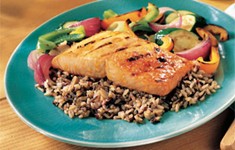
10. Hungry: Some good news to kick things off, courtesy of Technomic, which in April reported that 2011 chain restaurant sales grew by an average of 2.5 percent. Seafood spots fared well, like Joe’s Crab Shack, which grew its sales by 12.1 percent. Since at least two-thirds of all seafood consumed in the United States is at restaurants, this is a positive trend. The question is, can it last?
9. Not so hungry: Despite those decent foodservice numbers, seafood consumption still fell in 2011 to 15 pounds per capita, down from 15.8 pounds the previous year. Does that number mean demand is down, or is there more to it than that? One can make the argument that rising food costs are the primary culprit for stagnant sales, as the SeaFood Business Top Story in December examined.
8. Slimy: One of my most trusted industry colleagues said this to me, shortly after the Boston Globe turned in another piece on seafood fraud in the Boston restaurant market earlier this month: “We are better than this as an industry.” Too bad some others don’t share the same attitude and awareness. I won’t soon forget the Massachusetts Senate hearing on seafood fraud in Boston last January — the first such hearing of its kind — in the aftermath of last year’s Globe exposé.
7. Honesty: The good news is some people are speaking out against seafood fraud and its economic impacts. U.S. Reps Edward Markey and Barney Frank, both of Massachusetts, introduced the anti-fraud legislation Safety and Fraud Enforcement (SAFE) for Seafood Act. It would require full traceability for all seafood sold in the United States. My message to Congress: Pass this bill. Near the end of the year, Barton Seaver rallied more than 500 of his chef colleagues, along with NGO Oceana, to call for traceability requirements. “Seafood mislabeling is one of the most important issues currently facing the culinary industry,” said Seaver. It is well past time to clean up, seafood industry.
6. Angry: From the very beginning, many U.S. fishermen opposed Dr. Jane Lubchenco’s appointment as fisheries administrator for the National Oceanic and Atmospheric Administration. Just recently, the most vocal among them got what they wanted when Lubchenco wrote to her colleagues that she would step down in February 2013. Her positions on catch shares and ecosystem management are controversial, as was the agency’s response to the 2010 Gulf oil spill. Some good news from NOAA, though: A record six stocks were “rebuilt” in 2012, including Bering sea snow crab and Gulf of Maine haddock — that’s now 27 rebuilt fisheries in the past 11 years.
5. Stormy: The Gulf of Mexico is home to some pretty resilient folks, but they keep getting put to the test. Once again, a powerful storm battered the region and slowed fishing and processing activities. Hurricane Isaac caused millions of dollars in damages, but as we reported in November, the strength of the industry just cannot be denied. A couple of months later, Superstorm Sandy ripped across the Northeast, slamming hard into the New York-New Jersey coastline. We’ll have more on the impact of Sandy in our February issue.
4. Hefty: This story began at the tail end of 2011, when Canadian seafood powerhouse High Liner Foods acquired Icelandic USA and its modern processing and distribution center in Newport News, Va. The integration was recently completed. According to the SeaFood Business’ Top 20 North American Seafood Suppliers list, published in May, combined 2011 sales for the two companies topped USD 924 million, which would have vaulted them to third on the list. Prediction: High Liner will reach USD 1 billion in sales, either this year or next, joining the likes of Trident Seafoods, Tri Marine International and Pacific Seafood Group in the billion-dollar club.
3. Ugly: Many U.S. seafood and restaurant companies would struggle without the help of foreign workers on temporary visas available through the H-2B and J-1 programs. Both were saved in the nick of time this year, but it’s problematic that this seems to happen year after year. How is a seasonal business like a seafood processor supposed to plan for the future with so much uncertainty with labor regulations? Making matters more complicated, a number of U.S. companies that supply Walmart — including four seafood suppliers — this summer were accused of labor violations by the National Guestworker Alliance.
2. Shaky: The U.S. government’s approach to aquaculture could be described as cautious. And that’s being nice. In July, NOAA and the U.S. Department of Agriculture released a draft of its “National Aquaculture Research and Development Strategic Plan” as a guide for sustainable growth. Excuse me if I’m not overly optimistic about it, but it’s a step in the right direction. We also learned this past year that the standard-setting process for organic aquaculture production is not as far behind as was previously thought.
1. Self-sufficiency: Eight of the largest Alaska salmon processors discontinued their support of the Marine Stewardship Council program in favor of a sustainability certification scheme based on standards created by the United Nations’ Food and Agriculture Organization. The ripple effect was swift, as harvesters of multiple Alaska seafood species (cod, crab, halibut, pollock and sablefish) have already earned Responsible Fisheries Management certification. Later in the year, the Purse Seine Vessel Owners Association, which represents more than 400 boat owners throughout the West Coast and Alaska, stepped up to serve as the MSC client for Alaska salmon. One way or the other, seafood buyers around the world know that Alaska seafood is synonymous with sustainability, regardless of the eco-label on its packages.







